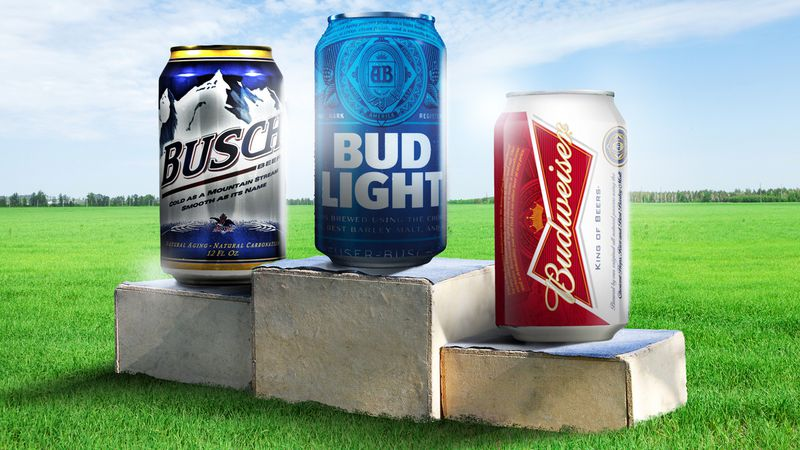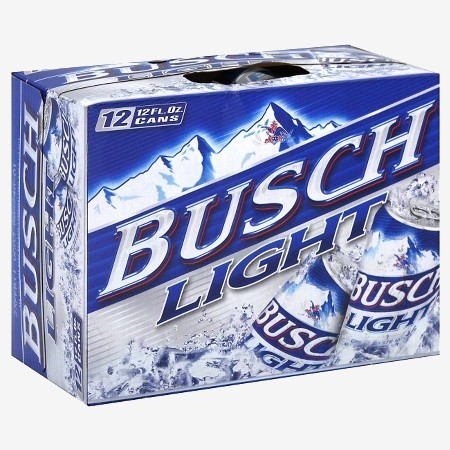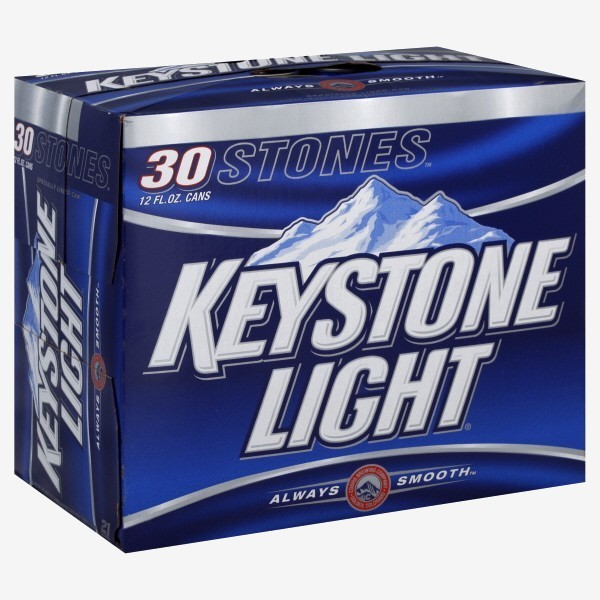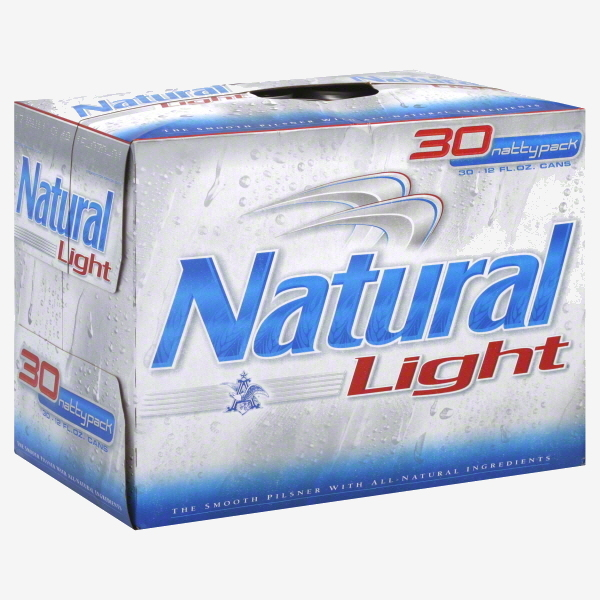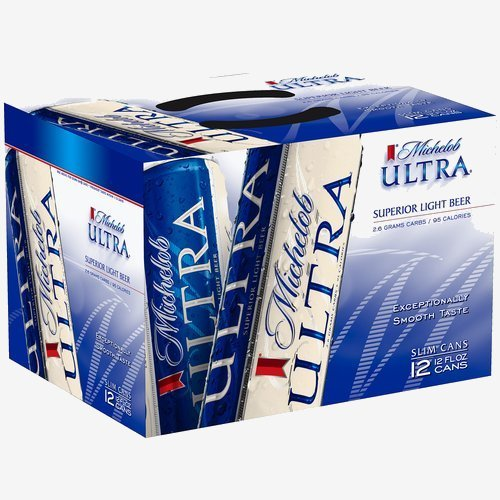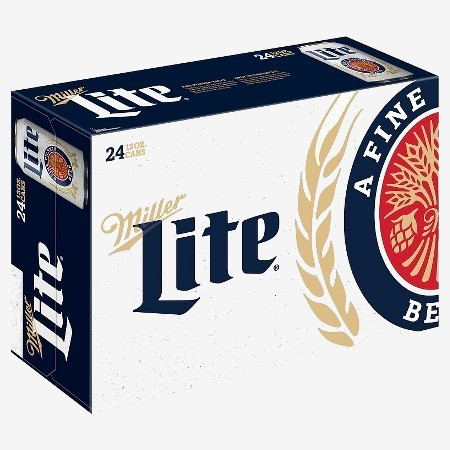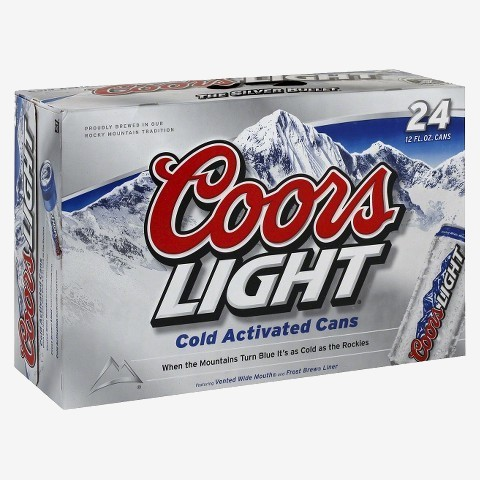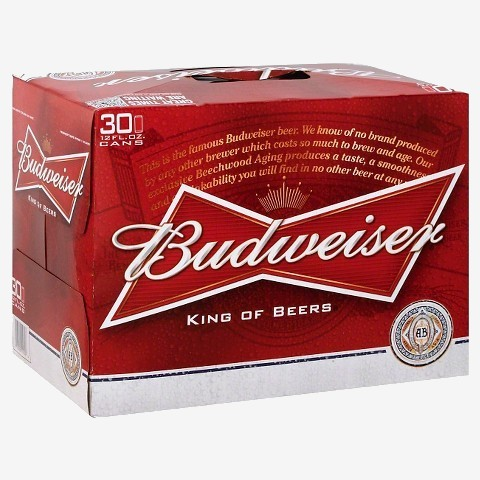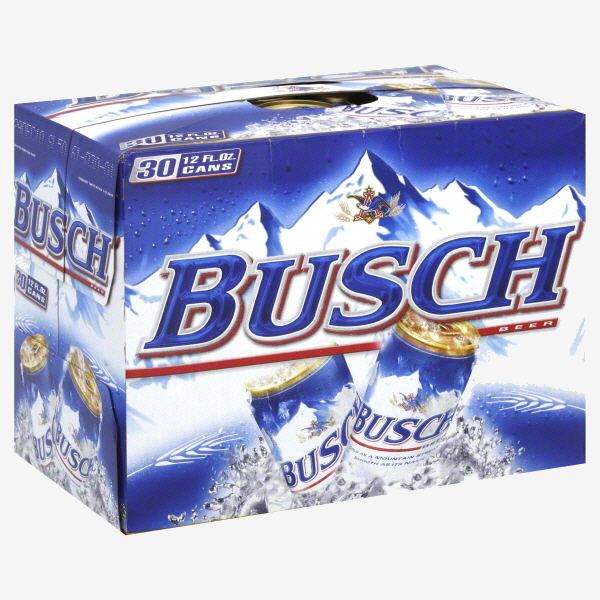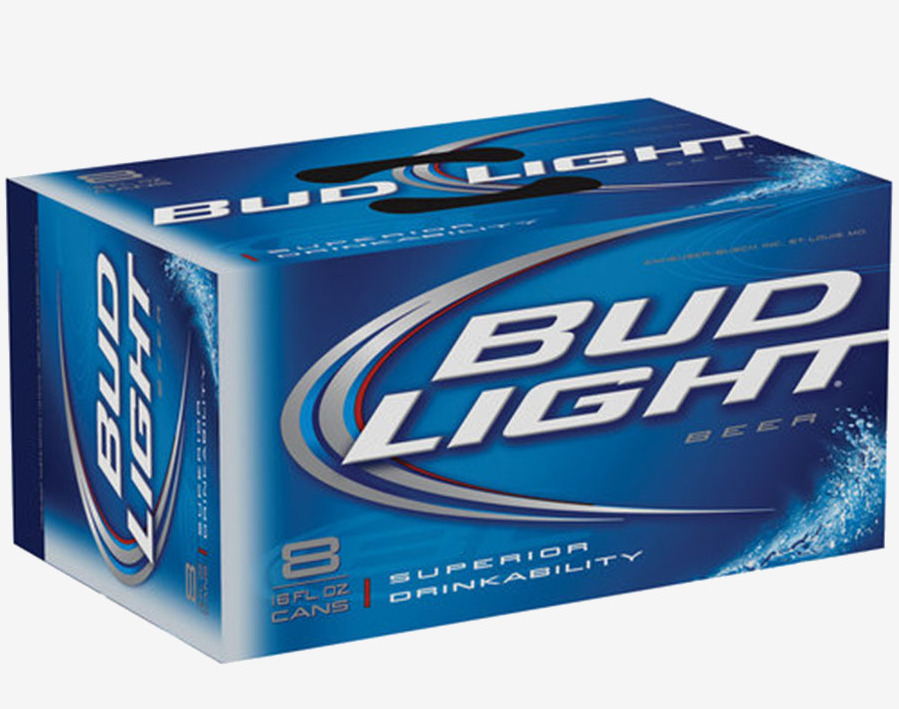Tasting—and reconsidering—America's Most Popular Beers
The first dirty joke I remember hearing had to do with beer. I was 11 or 12, and the adult son of a family friend was explaining why he didn't like Coors Light. "It's like having sex in a canoe," he said. This was the joke of a college-aged bro who had just discovered craft beer, but he wasn't wrong. America's bestselling beers—Bud Light, Coors Light, and Miller Lite, in that order—are all brewed to be crisp and refreshing. Having little flavor and less aroma is baked right into the style guidelines. They are, in every sense, fucking close to water.
As a restaurant critic in Portland, arguably the craft beer capital of the world, I should probably hate these mass-produced beers. The craft movement, after all, started 40 years ago in part as a flavor-packed protest to big beer's increasingly watered-down product. Because of those brewers' hard work, I can walk from my house to a half dozen beer bars pouring bing cherry-infused sours, hazy New England-style IPAs, or imperial stouts aged in bourbon barrels. Even Portland's dive bars pour gold-medal-winning IPAs.
Today, after a prolonged period of post-prohibition consolidation, there are more American breweries than ever before, most focusing on hop-heavy IPAs. Clearly, the multinationals have taken notice, snatching up once-independent breweries from Chicago's Goose Island to Bend, Oregon's 10 Barrel for their craft portfolios, even as their parent companies announce Galactus-sized takeovers. Yet despite craft's increasingly bigger gulp of the domestic market, Bud Light remains our most popular beer. Its revenue in the United States alone is higher than the gross domestic product of Belize.
I've spent enough time floating down Oregon's lazy waterways to know the value of a river beer. And besides, could tens of millions of Americans be wrong? Surely there's something about the mass-produced, no-frills domestic beer that makes it worth returning to again and again, despite the proliferation of other options. I decided to find out for myself by buying America's 10 bestselling domestic beers at my corner gas station, then tasting them blind.
It turned out to be a nearly impossible taste test, an epic Coke/Pepsi/RC Cola challenge of beers that attempt, by design, to blend in with the crowd. The winner surprised me—though it probably shouldn't have. Below is a ranking of America's bestselling beers by taste.

10. Miller High Life
Owned by: Molson CoorsFirst brewed in: 1903Domestic sales (2015): $195,500,000 (sales rank: 9)
The "Champagne Of Beers" is cloudier than its neighbors, with a lingering head of foam, plus a barely there flavor of tart citrus. The oldest brand in the Molson Coors portfolio, High Life has not gotten better with age. Inoffensive when cold, once it lost its fridge chill, it became completely undrinkable.
9. Busch Light
Parent company: Anheuser-Busch InBevFirst brewed in: 1989Domestic sales: $318,500,000 (sales rank: 7)
This is little more than alcoholic seltzer water, but at least it didn't make me gag.
8. Keystone Light
Owned by: Molson CoorsFirst brewed in: 1989Domestic sales: $171,300,000 (sales rank: 10)
King of the 30-pack, Keystone was the clearest beer in the tasting, with an odd sweetness and a barely there smell of a recently chlorinated swimming pool.
7. Natural Light
Parent company: Anheuser-Busch InBevFirst brewed in: 1977Domestic sales: $343,800,000 (sales rank: 6)
This is like regular beer that's been passed through a Brita filter 10,000 times.
6. Michelob Ultra
Parent company: Anheuser-Busch InBevFirst brewed in: 2002Domestic sales: $428,200,000 (sales rank: 5)
Before A-B InBev embarked on its current craft-brewery spending spree, Michelob was a go-to brand for crafty experimentation, with pumpkin-spiced and barrel-aged ales appearing in an annual holiday sampler. In 2002, at the height of Atkins mania, this Island Of Doctor Microbrewery birthed a diet-friendly beer for a carb-phobic crowd. For better or worse, most of the beers in this tasting have had the whisper of an idea—some nuttiness, perhaps, or a whiff of citrus. But Michelob Ultra is a nonentity, a personality-free beer for the carb- and life-phobic.
5. Miller Lite
Parent company: Molson CoorsFirst brewed in: 1975Domestic sales: $862,600,000 (sales rank: 3)
America's first widely distributed light beer owes its current surge in popularity to Anchorman 2. After a marketing tie-in with the Will Ferrell sequel, Miller Lite decided to bring back its 1970s-style logo, which features black gothic type and wheat laurels on a white background. In the new cans, customers rated the same beer higher, and after falling behind Budweiser earlier this decade, the brand has since rejoined the top three in sales. (Reminder: I tasted these beers blind.) Was there a darker color? Yes. A touch of nuttiness? Maybe. The smell of rich mahogany? Sadly no.
4. Coors Light
Parent company: Molson CoorsFirst brewed in: 1978Domestic sales: $1,030,400,000 (sales rank: 2)
Yes, it's watery (Rocky Mountain watery!), but no more so than the other light brews that together make up nearly half of all American beer sales. At one point, I thought I tasted a note of unripe raspberry, but it vanished before I could pin it down. Just then, my wife, who had been helping me with the taste test, turned around and gave me a look. "I'm not mad," she said, "it's just that you're burping and making all these weird noises with your mouth." I guess I'd been slurping the beer around, hoping to catch stray flavors. I would be sleeping on the couch that night.
3. Budweiser
Parent company: Anheuser-Busch InBevFirst brewed in: 1876Domestic sales: $718,700,000 (sales rank: 4)
My father-in-law has a theory about Corona, a beer that would be the fifth-highest-selling on this list if we included imports. All light beers taste better with lime, he believes, but we never think to ask for a wedge with Bud or Coors Light, which amounts to a stroke of marketing genius on the Mexican brewer's part. Oddly, without knowing which beer this was, I caught a hint of tart citrus here, as if the beer had a tiny amount of lime extract. Maybe this was a hop effect, or maybe A-B InBev is taking a trick or two from Corona (or the in-house upstarts at Bud Light Lime).
2. Busch
Parent company: Anheuser-Busch InBevFirst brewed in: 1955Domestic sales: $195,700,000 (sales rank: 8)
Budweiser's little-brother brand upstages the king. Super clear, vaguely floral, and it tasted better than Bud as it warmed. This is my new go-to boilermaker beer—a perfect backstop for a shot of whiskey. In other news, I thought the low alcohol content of these beers would keep me from getting drunk. I was wrong.
1. Bud Light
Parent company: Anheuser-Busch InBevFirst brewed in: 1981Domestic sales: $2,010,200,000 (sales rank: 1)
Until now, I've mostly associated Bud Light with the time some of my lughead Long Island in-laws went out for beer and came back with an 18-pack of the stuff. But after tasting each at various times and temperatures, America's favorite beer (it's not close) was also my favorite of the 10. Like the others, it was clear, straw-colored, and heavily carbonated, but I also sensed something vaguely Belgian-y and pleasant—perhaps happening within the yeast—like a supremely watered-down Hoegaarden or Saison Dupont. Assuming that flavor wasn't just a figment of my imagination, it's still not something you're likely to notice as you veg out to RedZone. But if you're in the mood for something light, or if your closest beer store happens to be a gas station, you could do much worse.
